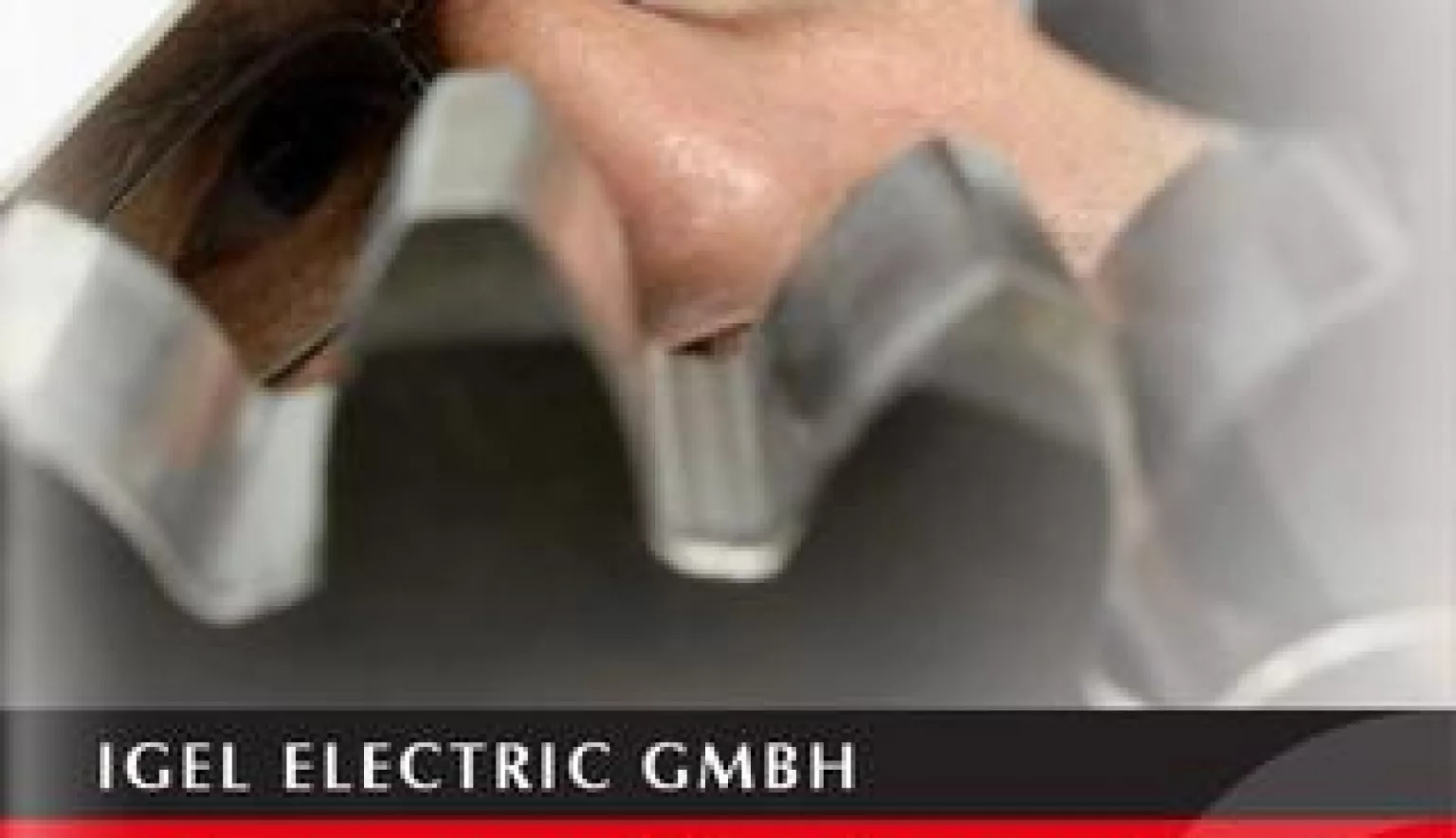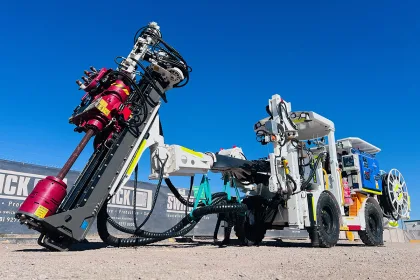The soft starter technology by IGEL Electric has proven itself over the years and is used all over the world, both in low voltage as well as medium-voltage applications.
Both in low and medium voltages, three-phase induction motors are the most widely used, due to their availability, simplicity, robustness and low cost. Despite these advantages of the “industrial-standard-motors”, their operation presents great challenges for many companies, especially regarding motor starting and stopping. Companies are able to handle these challenges depending on their specific conditions.
During direction line (DOL) starting and stopping, low and medium voltage motors experience starting currents of up to eight times the nominal current, high acceleration rate or high torque. These characteristics cause voltage dips in the network as well as mechanical wear, and in some cases, destruction of equipment; for example the gearing, couplings, shafts, belts or fragile parts of products.
One of the most common problems during motor starting and stopping is the so-called water hammer in pipelines, caused by sudden reduction of flow rate during sudden stopping of the pump. Although the motor-pump combination is hardly under any mechanical stress, this is not the case for the valves, and the pipeline. A repair of such equipment is very time-consuming and costly.
Utilities and regulatory bodies are also steadily raising the requirements for three-phase induction motors. Various EU-regulations aim to reduce energy consumption and CO2 emissions. The “Amendment 04/2014”, following the IEC 60034-30:2008, deals with the energy consumption, energy efficiency and energy classes (IE) of three-phase induction motors. Hereby the following classification is established:
- IE1 (Standard Efficiency)
- IE2 (High Efficiency)
- IE3 (Premium Efficiency)
- IE4 (Super Premium Efficiency)
The certification according to the ISO 14001 plays an increasing role for companies, as the demand for efficient and low-loss drive-solutions is continuously growing. The higher the rating in one of the efficiency categories is, the more competitive one’s products become.
Additionally, the instability of power grids has considerably increased since adding renewable energy providers. This is why network operators have introduced more restrictive rules for adding new consumers especially with electrical drives that use soft starters and frequency converters for motors with a voltage rating higher than 1 kV. Most technical instructions and addition requirements already include these regulations.
To start and stop motors in a way that is both technically and energy efficient – and several starters and starting methods are advisable – the commonly used star-delta-starter is often given the preference, due to its low space requirement and low cost as well as its reduced starting current.
However, there are also great disadvantages: It offers no adjustable starting characteristics and a soft stop is not possible at all. As the motor requires six wires, the cable costs are not to be underestimated. Also, high torque and current peaks during the switchover are possible. Altogether, an optimal motor protection is only possible with further components, i.e. further costs.
Like the star-delta-starter, the autotransformer starter offers a reduced starting current. However, it requires a lot of space in the switchboard and is comparatively expensive. The limited allowable number of starts each hour limits the suitability of this solution for more demanding applications. For this reason, and because the switchover of the starting characteristic is only possible utilising electro-mechanical devices, auto transformer starters are used less and less.
Many companies use frequency converters for their drives. Strong arguments in its favour are the continuously adjustable motor start keeping nominal torque, as well as the also continuously adjustable and therefore precise speed control. This way, the frequency converter enables a direct regulation of the currently needed torque by permanently adjusting the voltage and frequency. This leads to an improvement of the mechanical efficiency in the entire drive train.
However, every light has its shadow. As the frequency converters need a controlling-system, companies are faced with considerable costs. To prevent storage damage, motors – which operate with a frequency converter – need isolated storage space, which increases the cost of the motor.
Also, the efficiency of the frequency converter, especially in the lower-end application, leaves a lot to be desired. Electrical losses can be as high as five percent. Furthermore, the converter can be a high EMI-load for the network. The high heat generated alongside reduced torque can also be critical.
A more economical alternative to the aforementioned starting methods is the soft starter. Due to the used semiconductor technology, the soft starter does not need much maintenance and offers different starting and stopping performance.
The starting phase lasts for a maximum period in the range of 30 seconds, after which the soft starter is switched to the bypass mode. Accordingly, EMI-loads to the network only occur while starting and stopping. In the meantime, heat dissipation is only generated during the short period of starting and stopping phases. This is how the soft starter altogether reduces mechanical stress.
In comparison to the frequency converter, the soft starter is not only of a much smaller build, but also can boast efficiency above 99 percent. The settings of starting and stopping parameters are easy to handle. By this feature, voltage control and voltage ramp can be individually defined. Due to these characteristics, soft starters nowadays are used in almost all industrial applications, especially for drives that require a soft torque process or reduction of starting currents as well as weak networks.
In comparison to the frequency converter, the soft starter can claim a much lower failure rate, so that its failure rates are considerably below those of the converter
The reason behind this is the built-in Thyristors, which are more reliable and soft starters are not equipped with IGBTs.
For simple applications with small to medium power below 250 kW, the manufacturer offers analogue soft starter units with two-phase control, which are generally without integrated bypass-contactor. Those units are easier to handle and are promoted as an alternative to the star-delta starter. An added advantage is that only in-line connection is required, eliminating the need for six-wire connection dictated by star-delta configuration.
In low voltage and medium voltage installations, digital soft starter units with three-phase control, are used for demanding industrial applications. The units offer adjustable current-limits and complete motor protection, such as electronic overload protection, under current protection, phase failure/phase sequence protection, and UNDER/OVER voltage protection.
Operators can establish communication links with the digital soft starter units utilising the field buses’ communication ports installed. In the low-voltage range the units can be configured either as in-line connection or as in-delta connection, meaning time bypass-contactors can be added.
DISADVANTAGES OF SOFT STARTERS
Since soft starting and soft stopping minimises the water hammer effect, a typical application of soft starters is pump starting/stopping. Furthermore, soft starter units are used to soft start/soft stop fans, compressors, milling machines, screw conveyors, blowers, agitators, mixers and in some cases belt conveyors.
The disadvantage of the soft starter technology compared to the frequency converter, it is not able to control the speed and thus not suitable for applications requiring speed control. When starting loads have high inertial torque – for example in ball mills – it is easily applicable and has to be selected higher in power.
If speed control is not required, and it is only desirable to have a soft starting performance with the aim of minimising electric network disturbance as well as mechanical wear, the soft starter is the obvious choice.
The soft starter technology by IGEL Electric has proven itself over the years and is used all over the world, both in low voltage as well as medium-voltage applications. Units of up to 14 MW have been successfully installed and tested.




































